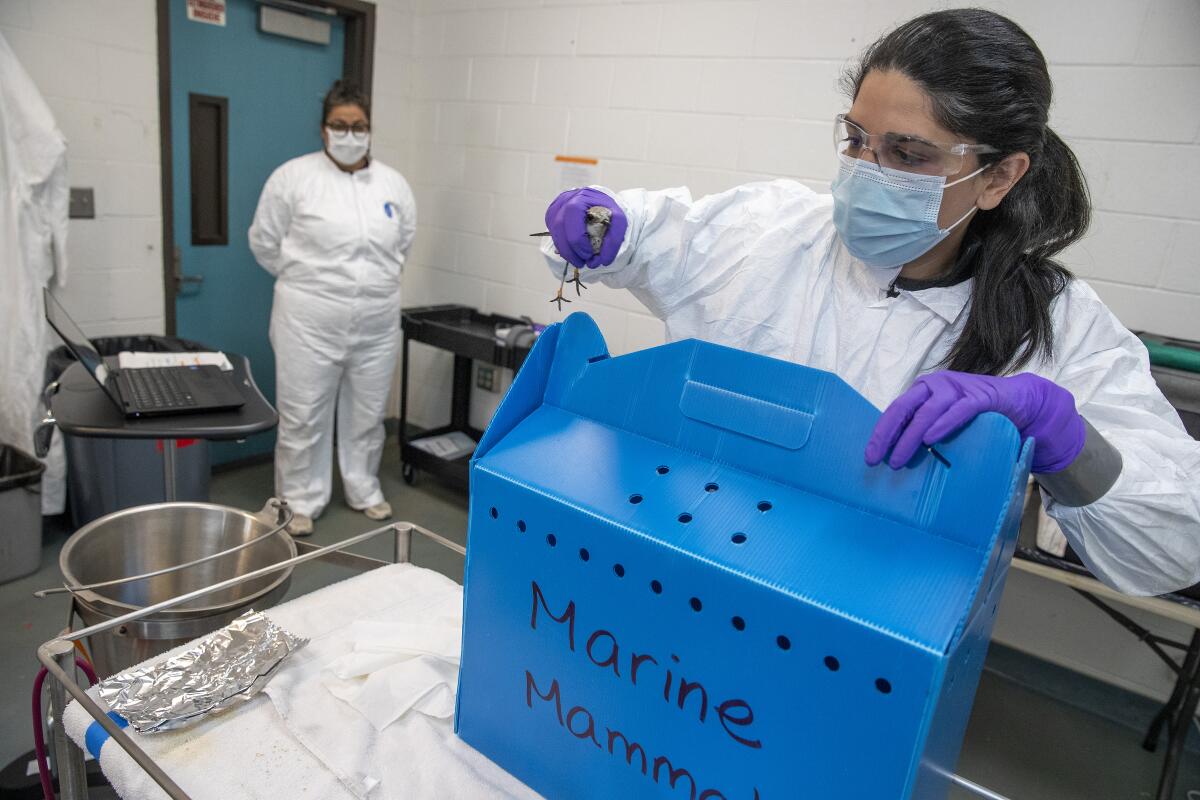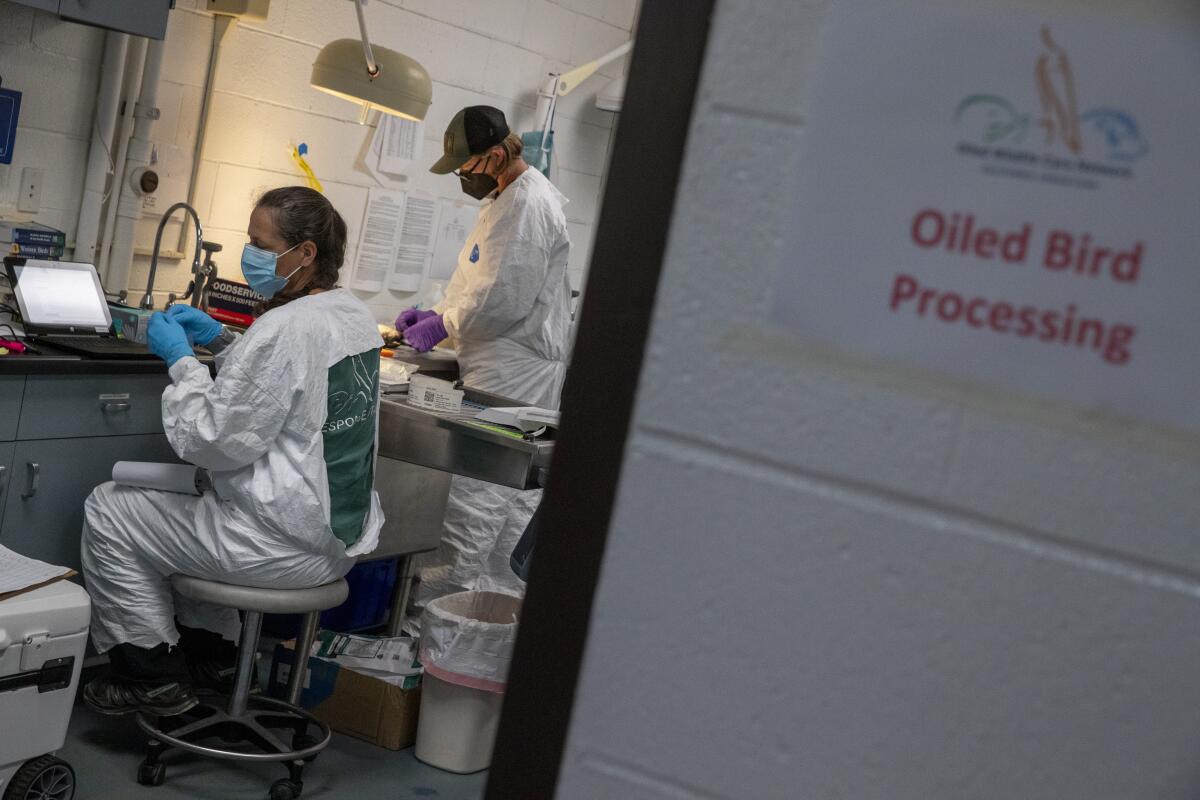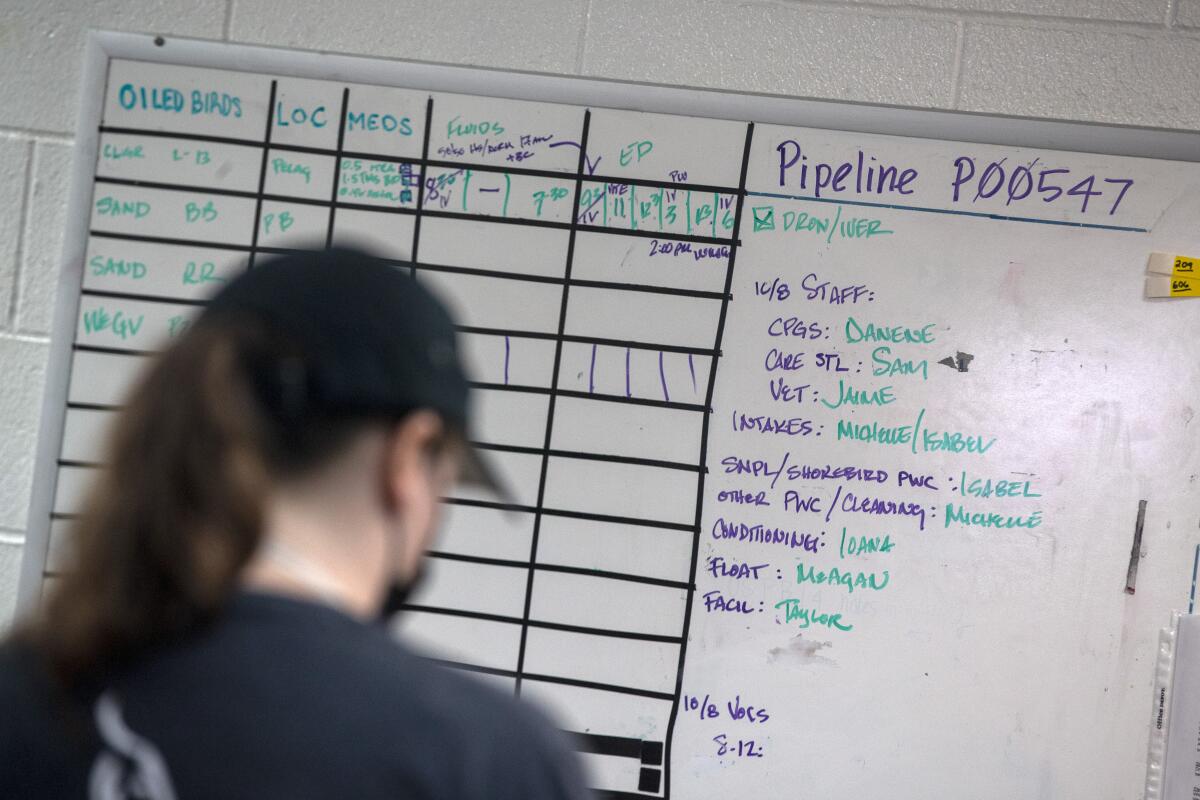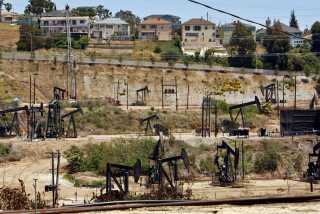Snowy plovers, already a threatened bird, are caught up in Orange County oil spill

- Share via
Life was never easy for the Pacific Coast’s western snowy plover.
The small, gray-feathered, white-bellied shorebirds that spend summers nesting on the sandy beaches of Orange County are masters of camouflage. Their nests, made of seashells, blend seamlessly into the shore during a breeding season that aligns with another great animal migration — that of millions of beachgoers, with their heavy feet, sandy-nosed dogs and trash, which draws the attention of the plover’s local predators: the crow, the raven and the raptor.

By 1993, the number of plovers had dwindled to 1,500. The species, once prolific from Oregon to Baja, was listed as federally threatened. Rapid development on the West Coast inevitably encroached upon the plover’s natural habitat. For decades, the shorebirds disappeared completely from Huntington State Beach.
But then something spectacular happened. In 2017, after years of habitat restoration and management, a single plover’s nest was found on the beach — the first in more than 50 years.
Each year since, more and more of the threatened shorebirds have returned. Lana Nguyen, an environmental scientist in the Orange Coast District of California State Parks, says the number of nests belonging to snowy plovers in Huntington and Bolsa Chica State Beach blossomed from one in 2017 to 19 in 2021.
The oil spill that fouled the coast threatened the snowy plover at a time when experts were hopeful that the species was making a comeback.
“The oil spill is certainly not going to help the plover’s recovery,” Nguyen said. “It’s hard to know what the long-term effects are going to be for the bird locally.”

Late Friday morning, an expert at the Los Angeles Oiled Bird Care and Education Center lifted a tiny snowy plover from a blue crate. The bird was one of seven plovers collected by experts at the UC Davis Oiled Wildlife Care Network, the primary organization working to rehabilitate the birds.
To date, they have collected 25 living, oil-covered birds. Two have died in the care of experts and another two were euthanized. Ten more birds were dead by the time experts found them on the beach.
Over the next several days, snowy plovers under the organization’s care will move through a circuit navigated by the oiled grebes, gulls, coots and pelicans that preceded their arrival. They will receive basic first aid, warmth and rest before they are cleaned of oil, fed and eventually — after 10 to 14 days — released back into the wild.
As of Friday, none of the snowy plovers in the custody of the Oiled Wildlife Care Network were stable enough to be cleaned, a process that can be traumatic to a bird that is already suffering.
That evening, Michael Ziccardi, director of the network, could not say whether all of the threatened shorebirds were expected to survive.

“We certainly hope so,” he said. “We can’t make a guarantee, but they are healthy now and [we] are working hard to get them back to normal and back in the environment.”
Once the plovers are stabilized, a trained professional will douse them in a special cleaning solution designed to break down the oil matting their feathers.
“Dawn, the dish detergent that we would typically use, is not quite enough to get this product off the animals,” said Sam Christie, a strike team leader with the Oiled Wildlife Care Network.
From there, the birds will be placed in a tub filled with warm water and a low concentration of dishwashing detergent. Agitating the solution allows it to penetrate the space beneath and through the bird’s feathers. Next, a Water Pik device is used to clean the bird’s sensitive areas — near the eyes, nose and mouth.
“As the tubs of water get oiled, we’ll move to the next tub,” Ziccardi said in an interview Monday. “Heavily, heavily oiled birds can take 15 to 20 tubs of this soapy water.”
After that, the soapy birds will be thoroughly rinsed with specialized nozzles using water pressure anywhere from 20 to 50 pounds per square inch.
The plovers will eventually be placed under a drier, where they can preen and align their feathers. Experts will then open their beaks and massage a soft rubber tube down their esophagus for a feeding. Once stabilized, they’ll move to outdoor pools where they will remain until they are healthy enough to return to a natural, oil-free environment.
The Oiled Wildlife Care Network has a 50% to 75% success rate in returning oiled animals back into a clean environment, Ziccardi said.
Like other shorebirds, plovers spend their days running and feeding along the tide line, where waves have deposited thousands of gallons of oil onto the shore and coated the small invertebrates, bugs and kelp that form the base of the plover’s diet.
Once ingested, oil can line the stomach and gastrointestinal tract of an animal, preventing key organs from absorbing water and nutrients, Ziccardi said.
“As the birds are using their feet and their bills to pick through and try to find invertebrates, that oil is inadvertently getting deposited on their feathers and in their mouth,” Nguyen said.
Shorebirds can fare better than seabirds in the early days of an oil spill, said Laird Henkel, supervisor of the Marine Wildlife Veterinary Care and Research Center in Santa Cruz, which is part of the California Department of Fish and Wildlife’s Office of Spill Prevention and Response. But that initial success can be short-lived.
Birds that live on the water must dive through the toxic sheen, causing severe oiling and forcing them onshore in major distress — hypothermic and waterlogged. That can work to their advantage, Henkel said. “We can get them veterinary care very quickly.”
On the other hand, shorebirds that are less oiled can actually suffer more long term. These birds remain mobile and difficult to capture as their overall health deteriorates.
“By the time we are able to catch them, their health may actually be more affected than heavily oiled birds,” Henkel said.
More to Read
Sign up for Essential California
The most important California stories and recommendations in your inbox every morning.
You may occasionally receive promotional content from the Los Angeles Times.










